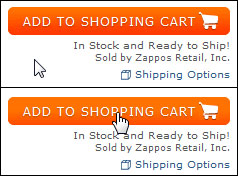Winning The Conversion But Losing The War
I’m writing this from a cruise ship in the middle of the Pacific Ocean (well, actually, about 500 yards from Cabo San Lucas). This is my first cruise, and it’s been an interesting experience. My expectation was that this would be an all-inclusive vacation on water; the reality has been somewhere between a crass timeshare […]
I’m writing this from a cruise ship in the middle of the Pacific Ocean (well, actually, about 500 yards from Cabo San Lucas). This is my first cruise, and it’s been an interesting experience. My expectation was that this would be an all-inclusive vacation on water; the reality has been somewhere between a crass timeshare sales pitch and a Las Vegas buffet.

Image via Shutterstock
What, you ask, does this have to do with search engine marketing? A lot, actually.
This trip has reminded me of something very important to all marketers: the difference between a one-time purchase and a lifetime customer.
In the parlance of online marketers, I’d describe this as the difference between your cost-per-acquisition (CPA) metric and lifetime-value (LTV) metric.
CPA Vs. LTV
As a brief refresher, CPA is the cost you pay to acquire a customer via SEM (many retailers use ROI or ROAS (return on ad spend) to measure this initial purchase); LTV is the total expected value you get from a customer over his/her lifetime.
Let me quickly describe the on-board experience on this cruise in more detail. Included in your fare is your room, meals, and the entertainment. Beyond those benefits, the rest of the cruise seems to be one ongoing attempt to get you to spend more money. A few examples:
- Want beer, wine, soda, or bottled water with your meal – that’s extra
- There’s a coffee shop with lattes, but that’s extra too
- Photographers follow your every move, in the hopes that you’ll end up buying a few pix
- Frequent announcements encourage you to attend the “art at sea” auction or a seminar on buying diamonds, or to buy a teddy bear for your kids
- After a massage, the massage therapist will lecture you about your health and strongly recommend at least $100 of lotions and potions to save you
- Want to see the ship’s laundry room? $95 for behind-the-scenes access
As my massage therapist was trying to pitch me on their $50 version of Ben-Gay, I had a vision of the management team of this cruise line giving their quarterly earnings call to stock analysts. I imagined that – in their world – “PPC” might stand for “profit per cruiser,” and the earning call went something like this:
“We lowered our average fare price by 4%, reducing our income by $280 million. But through improved upsells and cross-sells on-ship, our average PPC increased by 12% to $450 million, making for a very successful quarter. Our plans for the next quarter are to start charging add-on fees for walking on carpeted floors and for getting your linens changed in your cabin, which we expect will further increase PPC significantly.”
Now, I’m just one customer (and an ornery one at that), so I might be an outlier, but it’s unlikely that I’ll be taking a repeat cruise with this company. And if I did decide to do so, I’d make sure to add at least 50% to the fare price when calculating the value of the vacation. So while the cruise line did an admirable job of bilking me and my family during these seven days at sea, they’ve done little to make me want to come back.
Search Campaigns & Setting Conversions On Cruise Control
Now, think about how you run your SEM campaigns. You create ad text that entices potential customers to visit your site, followed by a well-tested landing page that pushes people through your conversion funnel as quickly as possible. You work hard to get that purchase, and then you sit back and high-five your SEM compadres when you see the ROI/ROAS go up or the CPA go down.
In one sense, you are doing exactly what you are supposed to do; you’re measuring actionable metrics and delivering increased performance, and you’ll probably get a well-deserved bonus for your efforts. But what happens after that customer checks out (other than the firing of your conversion pixel on the thank-you page)? Does that customer get great customer service? Does he feel like the product he received was worth the money he spent? Does he come back to make future purchases? Does he tell his friends and family about how great your company is?
Lifetime Value Trumps Cost-Per-Acquisition
In many cases, the companies that are the best at driving ROI/ROAS are the worst at creating loyal customers and LTV, simply because the whole company is driven by that initial purchase and not the long-term customer relationship. And, in most cases that I’ve seen, even if a company does care about LTV, it’s rare that the front-line SEM team is ever measured against, much less given insight into, the LTV that they are driving.
The result is a world where companies get hooked on marketing like a drug; if customers only buy from your business once or twice, the only way to keep driving more and more sales is to spend more and more money on marketing to drive new customers into the funnel.
Creating Customer Loyalty
Of course, there are companies out there that aren’t addicted to marketing. The poster child of this type of company is Zappos.
Zappos doesn’t offer coupons, doesn’t offer the lowest prices, and doesn’t advertise on products unless they know the product is in-stock (and if they advertise a product by mistake, they buy the product for you from a competitor).
What they do focus on is offering the world’s best customer service, free shipping, an incredible return policy, and zealous focus on LTV.
The result is a multi-billion dollar company with ecstatic customers, passionate employees, and incredible growth.
Do you think the Zappos SEM team is compensated solely on ROAS? Do you think they encourage their Web development team to add lots of pop-ups and flashy banners to try to close that extra .02% of customers? Of course not, and yet here they are, the world’s biggest online shoe store.
If Zappos ran this cruise line, I can assure you that the seminars on buying beautiful tanzanite rings would be eliminated and the Diet Coke would flow freely. The price to get on the ship might be a little more expensive, but people would happily pay it and happily return year after year for more cruises.
One of my favorite books ever is Customer Loyalty by Frederick Reichheld. If you doubt that a customer-first, LTV-over-CPA model can work for your business, read this book (by the way, Zappos has it in their lobby!). Whether you run a cruise ship, a shoe store, or an e-commerce business, the days of just focusing on the initial sale and not the long-term customer relationship are ending. As some might say, that ship has sailed!
Contributing authors are invited to create content for Search Engine Land and are chosen for their expertise and contribution to the search community. Our contributors work under the oversight of the editorial staff and contributions are checked for quality and relevance to our readers. The opinions they express are their own.
Related stories
New on Search Engine Land
